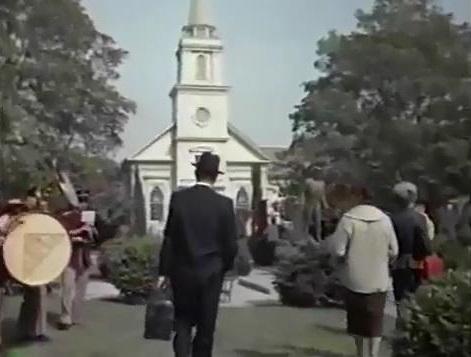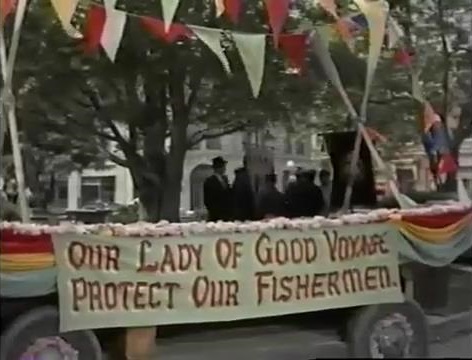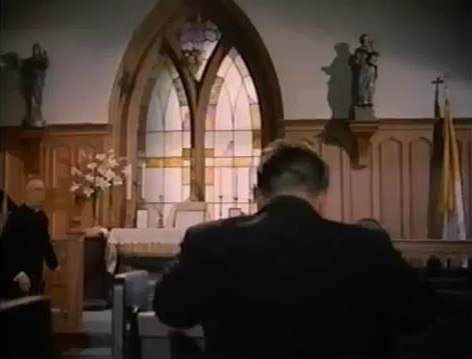Bang the Drum Slowly
Henry V is cited at the outset in
Olivier’s arrangement of a player-king’s cough and
Shakespeare’s scene-setting Chorus, the unimaginative audience is invited
to convey its mind along the course of this saving drama from set to set in the
television studio with a few cameras and a dozen or more players by the author
himself, a star pitcher for the New York Mammoths. The title might be
Bresson’s Le vent
souffle oł il veut from the opening scene, a Flaubertian image of spitting from a high
place (noted by Salmi as a piece of acting). When the spirit is withdrawn, an
existence is doomed (cp. Quartermaine’s Terms, dir. Bill Hays), Schulman’s teleplay expands the ritual of
destruction in the full panoply of metaphor. There is the replacement catcher,
a motorcycle nut who becomes a cowboy at the drop of a Stetson, his six-shooter
puts out the lights.
Sympathy breeds solidarity, the Mammoths go on to the Series. But
mostly, their left-handed pitcher stops being a whining shitsack about taxes
and instead learns there is no Machiavellian scheme to deprive him of his
existence, he forgets all that in sight of the disaster.
The doomed catcher, who’s not very bright, gets wised up about what
makes a ballplayer, his pinch-hitting improves by observation.
Petrie makes it look easy.
The Bramble Bush

The Stranger and the Drowned Man and the Fisher
King, figures from Eliot (Welles provides the first image to open the film, a
church banner the other two, in the town square of Harper-Dereham).
|
Musing upon the king my brother’s wreck And on the king my father’s death before
him. |

The dying scribbler is taken up the
following year by Antonioni in La
Notte, Housman’s
“Here Dead We Lie” ornaments the role.
|
Here dead we lie |
Critics understood it as a treatise on
euthanasia and flubbed at that (cf.
Losey’s Boom!), it
ends with the Church.

Screenplay Milton Sperling
and Philip Yordan, cinematography Lucien Ballard,
score Leonard Rosenman.
Bosley Crowther of
the New York Times,
“falls apart.” Variety,
“gets lost”.
TV Guide,
“overloaded New England soap-opera”. Leonard Maltin,
“superficial gloss”. Tom Milne (Time Out), “glossy”.
Mark Deming (All Movie Guide),
“high-gloss soap opera”. Halliwell’s Film Guide, “sordid...
dispiriting”.

One Day in the Life of Ivan Denisovich
A zek in
Siberia.
“Traitors must expect death.”
“Or a good job with an official car.”
Dramatically conceived, “a good day,” in
half the time of Wrede’s film, very shortly
after publication.
Moon of the Wolf
Location filming on the bayou is the perfect correlative of the action
in its mysteries, this is an iconic werewolf amid labyrinthine swamps and
verdure, the town structure and the social order.
The main point is a Scarface motif mirrored in his victims.
Equal to the cinematography is Bernardo Segall’s score, between
the two is a great cast (David Janssen, Barbara Rush, Bradford Dillman, Royal
Dano, John Beradino, Geoffrey Lewis, John Chandler, etc.).
Fort Apache the Bronx
The structure is provided by John Ford’s film, which is curiously
not mentioned in the reviews.
The crime element is “where ignorant armies clash by
night.” The whore on angel dust who kills two rookie cops is stabbed to
death by the drug dealer who gives the cop’s girlfriend a fatal overdose
and is shot dead by him in an exchange of gunfire after taking hostages during
a drug bust, the exact nexus of events is known only to the camera.
The middle ground is a New York rapprochement with the crazies and a
sort of deadline with the crooks, “keep it off the street.”
The new precinct captain has an eye toward the serious people of the
Bronx and its future, he stirs up a hornet’s nest to dispute the
territory with criminals.
A few notes indicate the real complexity, critics repined there was nothing
to it but “cop shows” or some other excuse.
The death of a kid at the hands of a cop tears it, the witness is a cop
bound by the code of silence, resignation looms, but a ganef provides the thrill of the chase.
Inherit the Wind
Brady’s “golden chalice of hope” v. Drummond’s Golden Dancer.
A very close remake in color, for television, of Stanley Kramer’s
film.